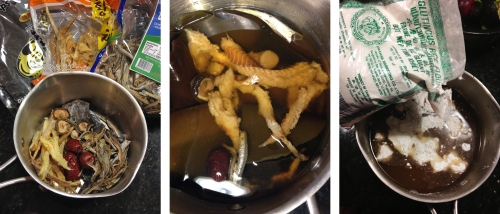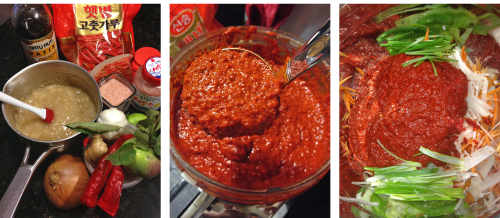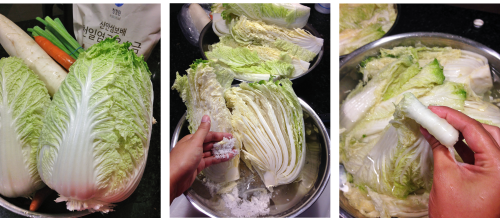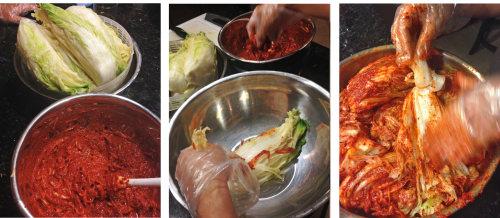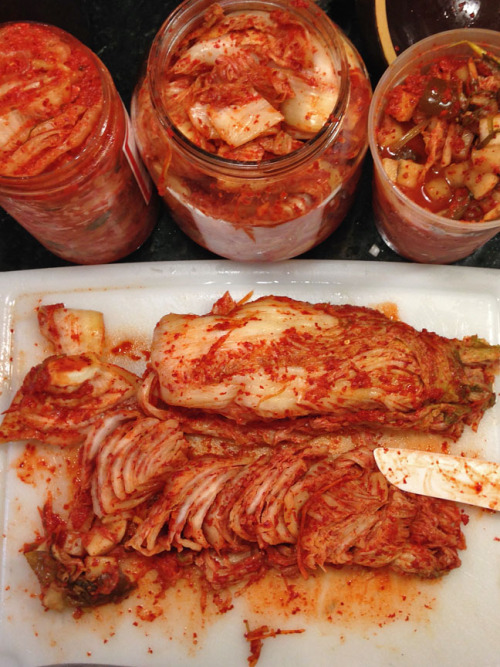hqcreations:My First Kimjang Experience!I’ve been putting this off for years, but I finally did it!
hqcreations:My First Kimjang Experience!I’ve been putting this off for years, but I finally did it! I made a nappa cabbage kimchi using traditional-ish ingredients and techniques. As a non-Korean, I’ve always found this to be a daunting task. After copious amount of research, Youtube vids, and breathing exercises, I finally understood kimjang can be broken down into five phases.=========1) Brew the stock. In a pot, I gently boiled a mix of kombu, shittake, dried pollack, dried anchovies, and dried jujube. This stock is different depending on the region of Korea, but the idea is to extract a nutritious umami base. I strained the stock and let it cool. 2) Make the paste. This step is critical as it determines the flavor profile of the kimchi. Mix glutinous rice flour into the stock and gently cook until you get two/three cups of a THICK gluey porridge. Let cool then dump into a processor along with 1 onion, knob of ginger, ~20 garlic cloves, ~1 tbs of salted shrimp, ~1 cup of fish sauce, a few fresh red chillies, 1 apple, and a shit ton of Korean red pepper flakes. Like a shit ton. I added it until the paste is a burning blood red. To this paste fold in julienned veggies. There are many regional differences in what types of veggies to add, but I used what is common/available to me which were scallions, carrots, koran radish, asian chives, and dropwort. 3) Prep the cabbage. This is probably the first step you should do since it requires a long waiting period. The goal is to draw out water out of the caabage. Quarter the cabbage after washing and trimming. Sprinkle a tiny bit of chunky SEA SALT between EACH LEAF, concentrating at the stem. Cover the cabbage in water and throw in an extra handful of sea salt. This needs to sit in the brine for a good 8+ hours; it’s ready for the next step when the stems can be folded over without snapping.4) Apply paste to cabbage. Rinse the cabbage to remove excess salt and drain out as much liquid as possible. (The brine is generally discarded at this point.) Scoop up some paste, then LEAF by LEAF, paint on the paste, leaving pieces of the julienned veggies wherever they fall.5) Store and ferment. I have a proper fermentation crock, but if you only have a glass jar, tupperware, or plastic bags - that works too. Stuff the kimchi in a container and leave to ferment in a dark location with room temperature ~70F for two to three days depending on how sour you prefer. Transfer kimchi into a fridge, which will drastically slow down the fermentation. In about another week, the kimchi should be at good to consume. =========There are many cheats and substitutions you can apply to reduce stress and cost. And yes, you can even make a vegan or raw vegan version of kimchi. However, every small deviation will alter the flavor profile, so experiment at your own risk! -- source link
#fermentation#hqcreations#kimjang#food preservation
